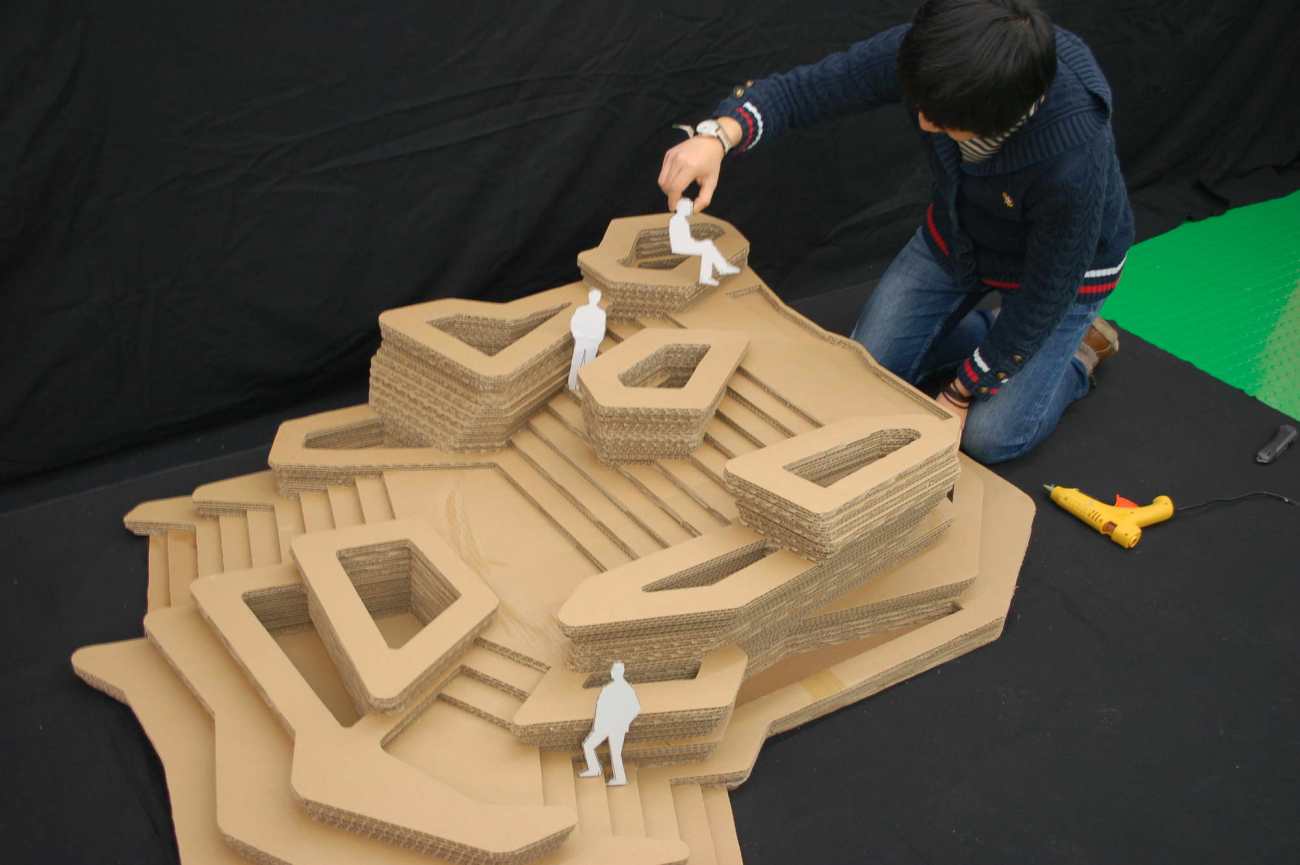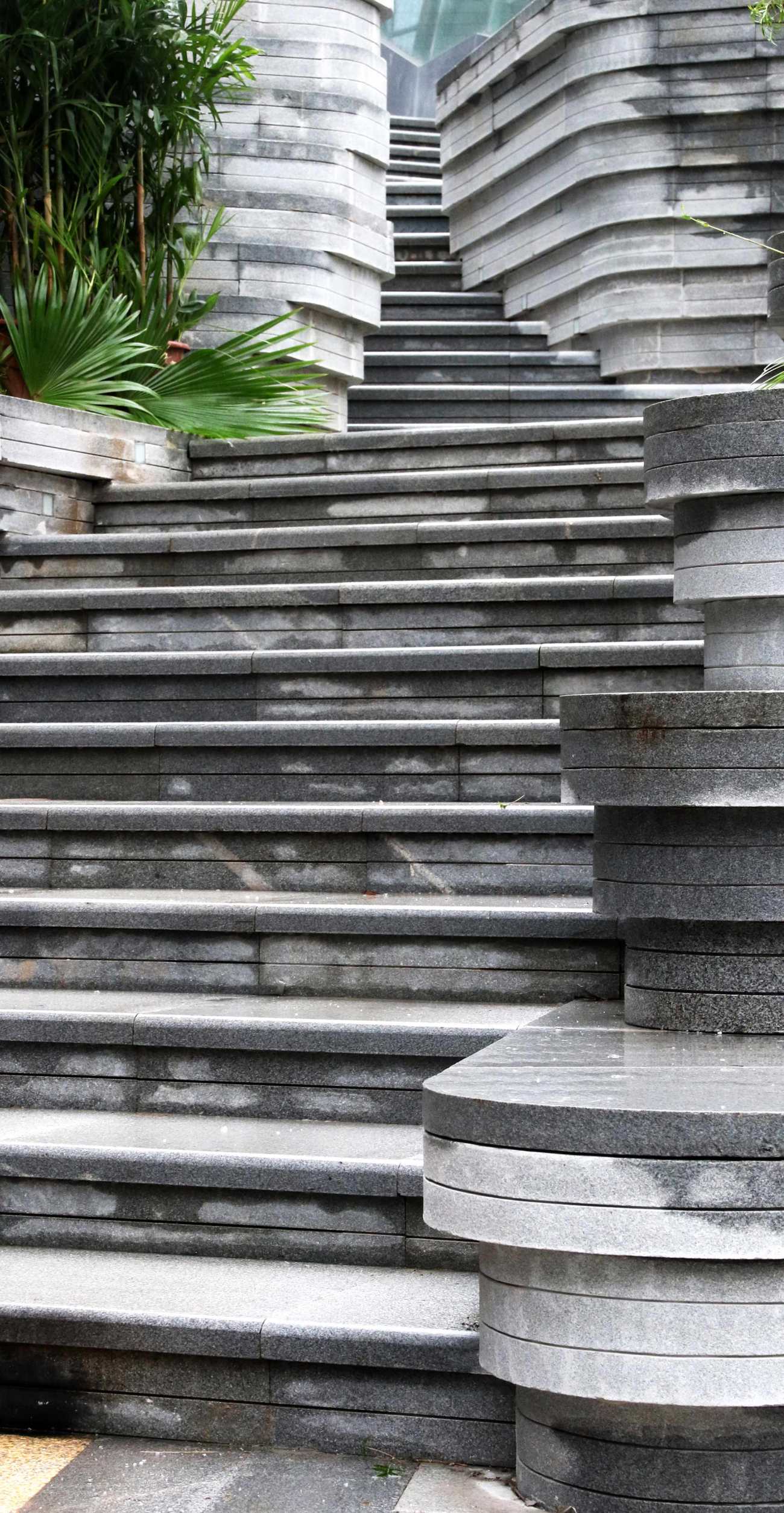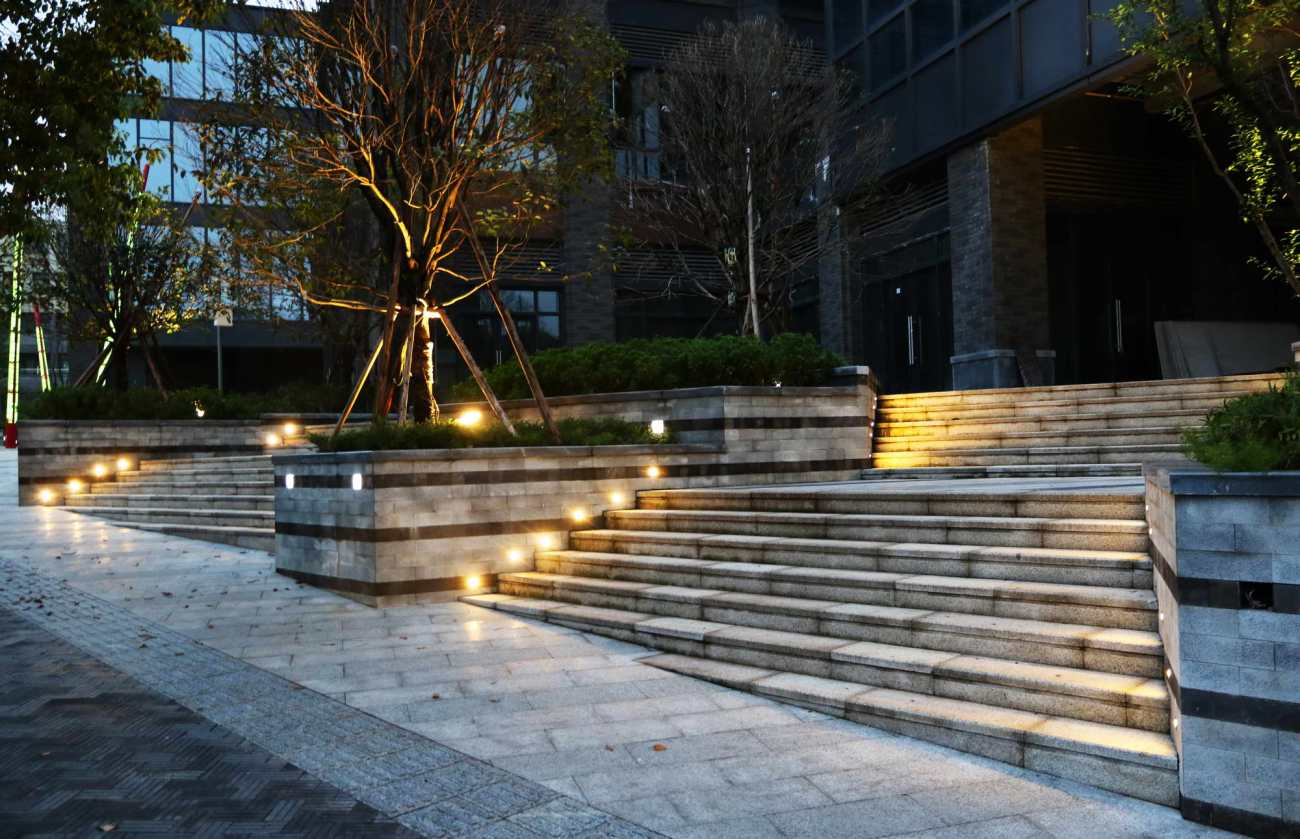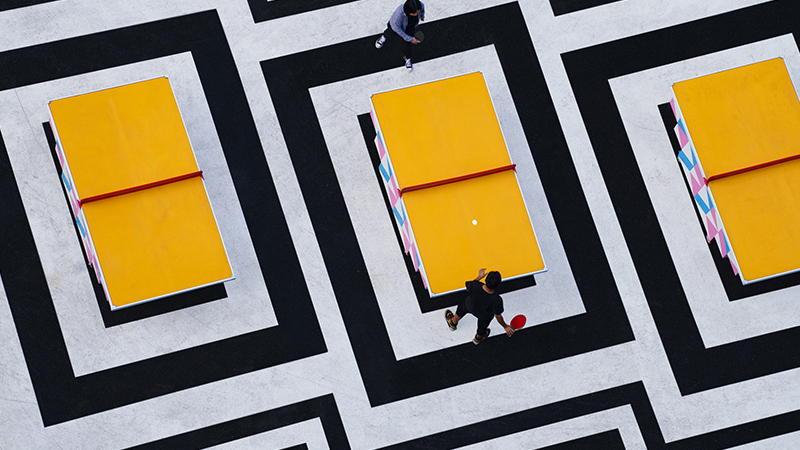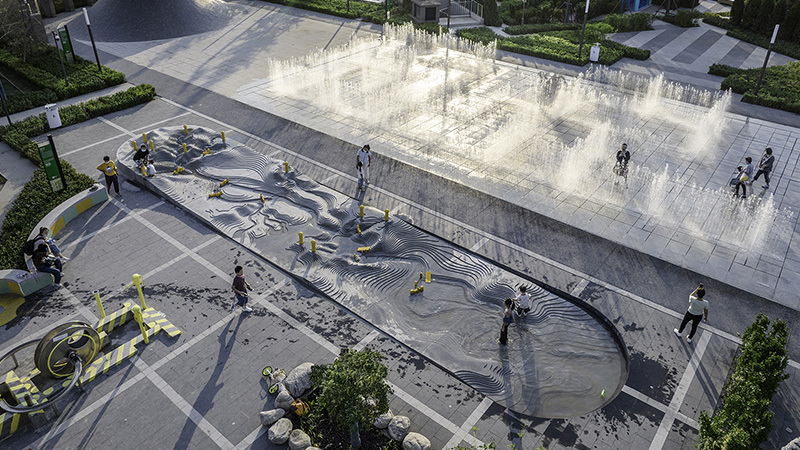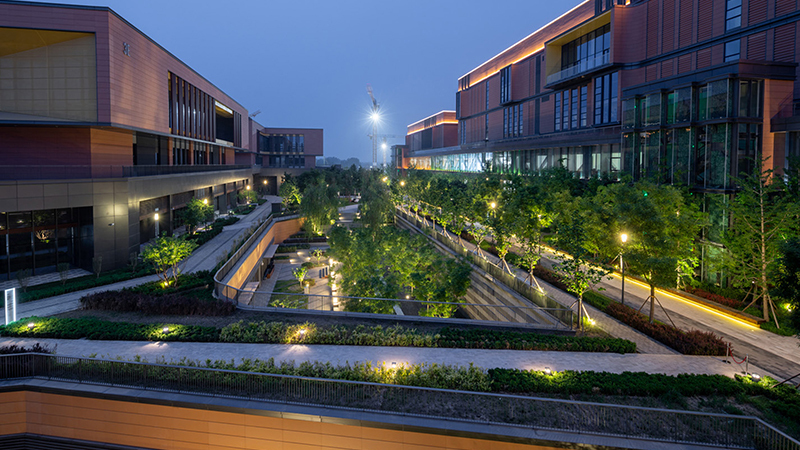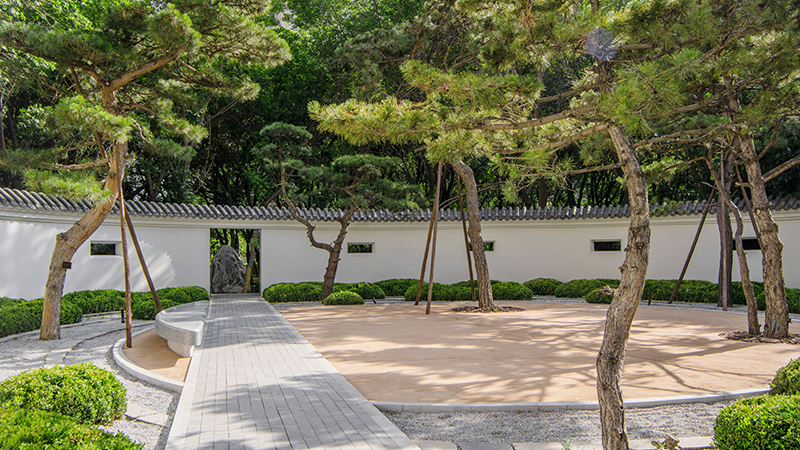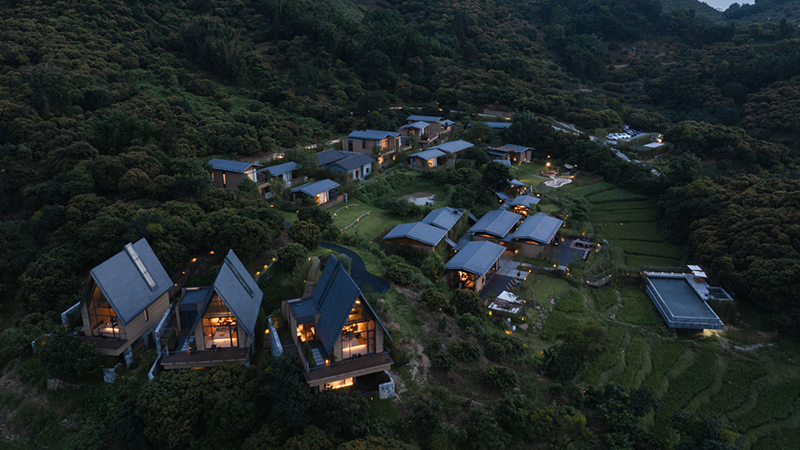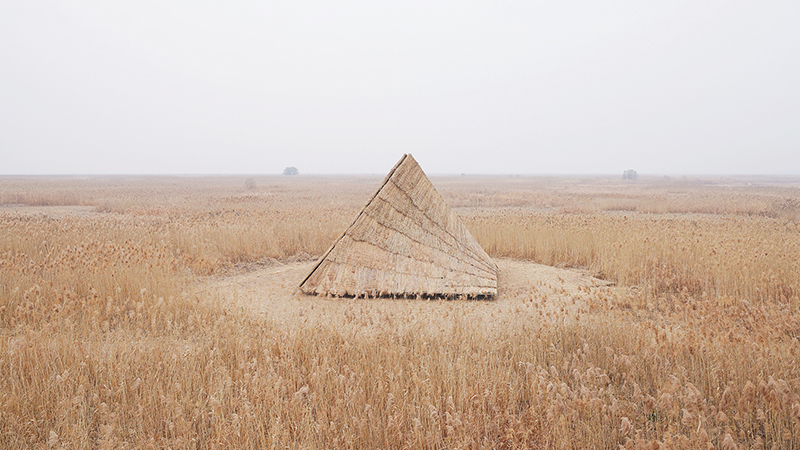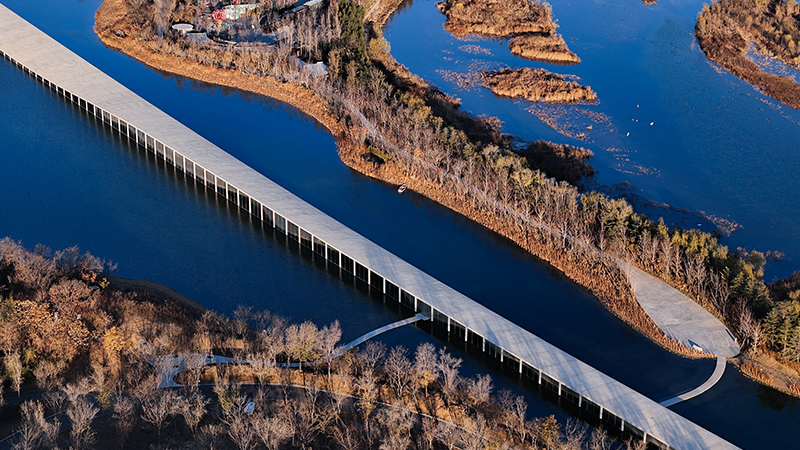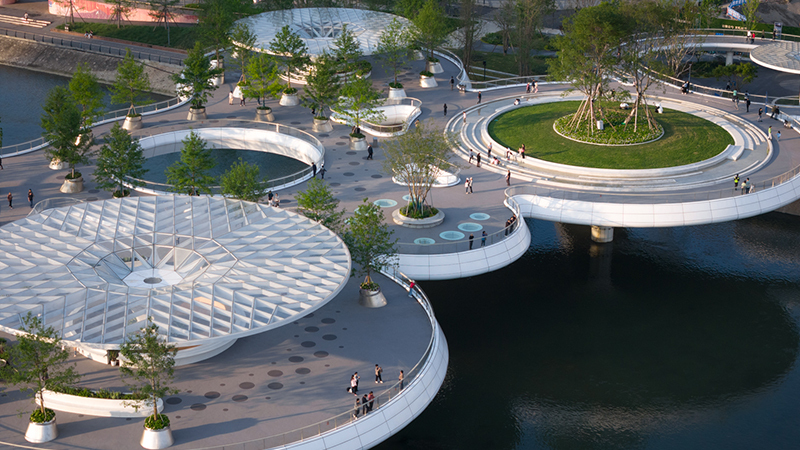该项目位于一个独特的三角形地块,所在的山坡俯瞰着向重庆市中心流去的长江。三角形地块的顶端指向北边,正对着长江。北部顶端的部分由一座交通岛广场和袖珍公园组成,比朝南的地块最高处低约11米。 建筑方案包括社区零售店和位于地块最高处的一座酒店。
The site is a unique triangular plot shape, positioned on a hillside overlooking the Yangtze River as it flows towards central Chongqing. The plot is oriented with the triangular tip pointing north towards the river. The tip is composed of a traffic island plaza and pocket park, and stands about 11m in elevation below the highest part of the site at the south. The architectural programs include neighborhood retail and a hotel at the highest part of the site.
△楼梯基座的纸板模型Stair plinth in cardbooard model
重庆的地势以丘陵为主,这使重庆城市景观的设计历史中形成了拥有大量楼梯和坡道的有趣状况。BAM致力在中央广场创造一个楼梯,不仅在广场和夹层之间创造一个实用的连接,其本身也会作为一个公共空间而使用。
The urban condition of Chongqing is predominately hilly which has resulted in very interesting stair and ramp conditions within the history of its urban landscape. BAM focused on creating a stair in the central plaza that not only created a functional connection between the plaza and the mezzanine, but also served as a public space in itself.
△给建筑工人使用的细致模型显示了石头和混凝土结构的关系。
Detail model for builder showing relationship of stone to concrete structure.
楼梯的设计模仿层叠堆积的岩石,似乎随着时间的推移而被侵蚀和软化。层叠的岩石元素在一些区域延伸成为了座位角,在另一些地方则打造出了种植区。石头部分形成了一个4米高的基座,通过另一个楼梯与夹层相连,这是更加轻巧和精准的钢结构。
The stair is designed as a series of built up layers which seem to have been eroded and softened over time. The stacked stone elements extend in areas to create seating nooks, and in some areas they form planters. The stone portion forms a 4m tall plinth which is connected to the mezzanine by another stair system, a more lightweight and precise steel system.
△最初,建筑师设计了一个连接中央广场和夹层的普通钢楼梯。 BAM将这一元素发展成一个由种植区、长椅和可供休息的角落组成的雕塑混合体。楼梯的下部是由150毫米厚的花岗岩层构成。上部采用了较轻的钢结构,将上方的画廊与花岗岩基座轻巧地连接起来。
Initially the architects had designed a common steel stair connecting the central plaza to the mezzanine. BAM developed the element into a sculptural amalgamation of planters, benches, and inhabitable nooks. The lower portion of the stair is constructed as 150mm thick granite strata. The upper portion utilizes a lighter steel structure, gently connecting the gallery above with the plinth of granite.
景观设计创造了一系列的细节元素来激活中央空间。地砖排列和一个特殊的人行道吸引客人从交通岛走向像素化设计的花岗岩水景。
The landscape design creates a sequence of detail elements which activate the central space. Paving and a special crosswalk attract guests from the traffic island towards the pixelated granite water feature.
△像素化呈现的花岗岩水景从山坡上冒出来,仿佛一个岩石阵,在喷泉运行或停止时都显得很有趣。
The pixelated granite water feature emerges from the hillside site as a rock formation, looking interesting both when the fountain pumps are running or dry.
水景的设计确保即使水循环被关闭,它仍然可以看上去非常有趣,就像一个在广场上诞生的岩石阵,部分被景天植物所覆盖。倾斜的灯杆指引游客通过自动扶梯到达主广场空间。
The water feature is designed to be turned off and still look very interesting, as a kind of rock formation emerging from the plaza, partially covered in sedum. Tilting light poles guests up a series of escalators to the main plaza space.
项目名称:融汇综合体
项目位置:重庆市巴南区融汇半岛四期
设计单位:BAM百安木
设计周期: 2013-2015
施工周期:2015-2016
景观面积:14,800 m2
项目类型:景观建筑
客户:融汇
Project: Ronghui Mixed-Use
Location: Ronghui Peninsula Phase IV, Banan District, Chongqing
Design Period: 2013-2015
Construction Period: 2015-2016
Landscape Area: 14,800m2
Scope: Landscape Architecture
Client: Ronghui
更新日期:2021-09-15 14:47:12
非常感谢 BAM百安木 带来的精彩项目, 查阅更多Appreciations towards BAM for sharing wonderful work on hhlloo. Click to see more works!


